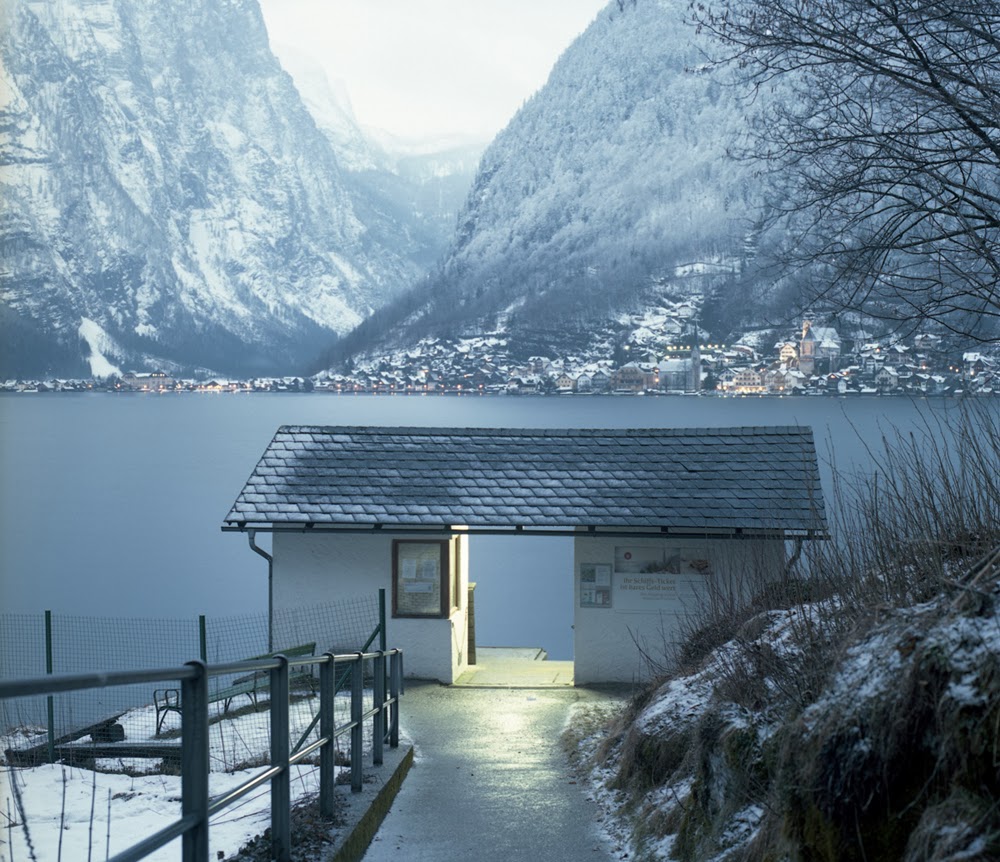The mythological river Styx, the conduit between the world of the living and the world of the dead, entailed a notorious ferry ride.
Landscape with Charon Crossing the Styx, Joachim Patinir c. 1515–1524, Museo del Prado of Madrid, Spain.
Situated between a lake and a mountain, Hallstatt has a famous ossuary, a site frequently used when burial space is scarce. It is filled with remarkable, and hauntingly beautiful, painted skulls.
“As a child, I visited the ossuary, with its painted skulls, one of the strangest places I have ever been—a mystic and very silent place,” the photographer Paul Krasner told The New Yorker this month. “As one would decorate a grave with flowers, the skulls were painted by the local gravedigger. Earth pigments were used, and the women’s skulls were painted with colorful flowers, the men’s with ivy leaves. The deceased’s date of birth and death were written on their forehead. This tradition began in 1720 A.D., and there are now over twelve hundred skulls, six hundred and ten of which have been painted."
"All are at one now, roses and lovers,
Not known of the cliffs and the fields and the sea.
Not a breath of the time that has been hovers
In the air now soft with a summer to be."
~ Swinburne, "A Forsaken Garden"
Paul Krasner's photo project, Vademecum, began in 2010. The title derives from the latin vade mecum, which literally translates to “Go with me” or "Walk with me" and refers to a handbook, manual, or guidebook.
Bone houses present the living with the opportunity to confront or commune with death and the dead. (It is an interesting fact that human beings housed their dead before they housed themselves.)1. Krasner's project offers access to the timelessness and connectivity that these unique spaces possess. They are at once alive in the present, staring at the past, and beg contemplation of the future. "For what is a place if not its memory of itself - a site or locale where time turns back upon itself?" 2.
We are all "eventually united–as people were in these places, in these homogenous piles." - Paul Koudounaris, author of The Empire of Death: A Cultural History of Ossuaries and Charnel Houses
1. Robert Pogue Harrison, Dominion of the Dead, University of Chicago Press, 2003, p38.
2. Harrison, p23





No comments:
Post a Comment